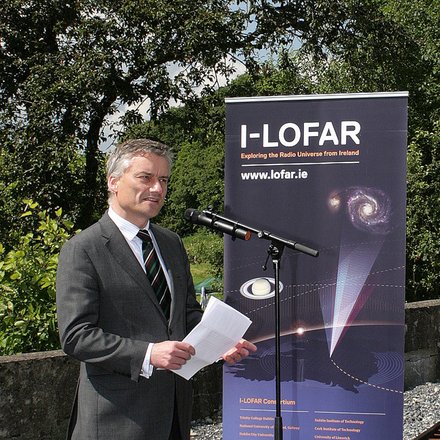Trinity astrophysicists are preparing to map the Perseid meteor shower using the Irish Low Frequency Array (I-LOFAR) radio telescope in Birr Castle this weekend.
On Saturday, they are expecting the highest level of meteor activity – 10 meteors will be visible per minute.
The team behind I-LOFAR is hoping to document the number of meteors per minute, how fast they are, their origination, and where they are going. They will do so using using radio antennae to observe reflections of aeronautical radar off the plasma trail of each meteor. The team will use GRAVES, a French radar system to monitor satellite orbits. They will also employ a second method, measuring direct emission from plasma in the tails. The public will be able to watch the show of shooting stars.
LOFAR is a network of radio telescopes across Europe, built by the Netherlands Institute for Radio Astronomy in 2006 at a cost of €150 million. The network stretches across the Netherlands, France, Germany, the United Kingdom and Poland. I-LOFAR is the Irish station and its introduction to the network expanded the overall telescope by 30 per cent.
Meteors are small rocks that have broken away from asteroids or comets. They are caused by collisions or extreme temperatures from their high velocities. The pieces of rock enter the atmosphere of Earth and they are further heated due to air resistance – this is what causes them to glow, allowing us to see them. A meteor shower occurs when a comet passes very close to the sun and the Earth, triggering heating and breaking up the comet.
This weekend, the Earth will pass through the path of dust and debris behind the comet Swift-Tuttle, causing the Perseid meteor shower. It will be most visible on Saturday and Sunday night.
Ireland’s inclusion in the famous network of telescopes was an important event for Irish researchers given the previous lack of funding for Irish astronomy and astrophysics. It is hoped that with this new telescope, they will be able to make major breakthroughs in the field.







